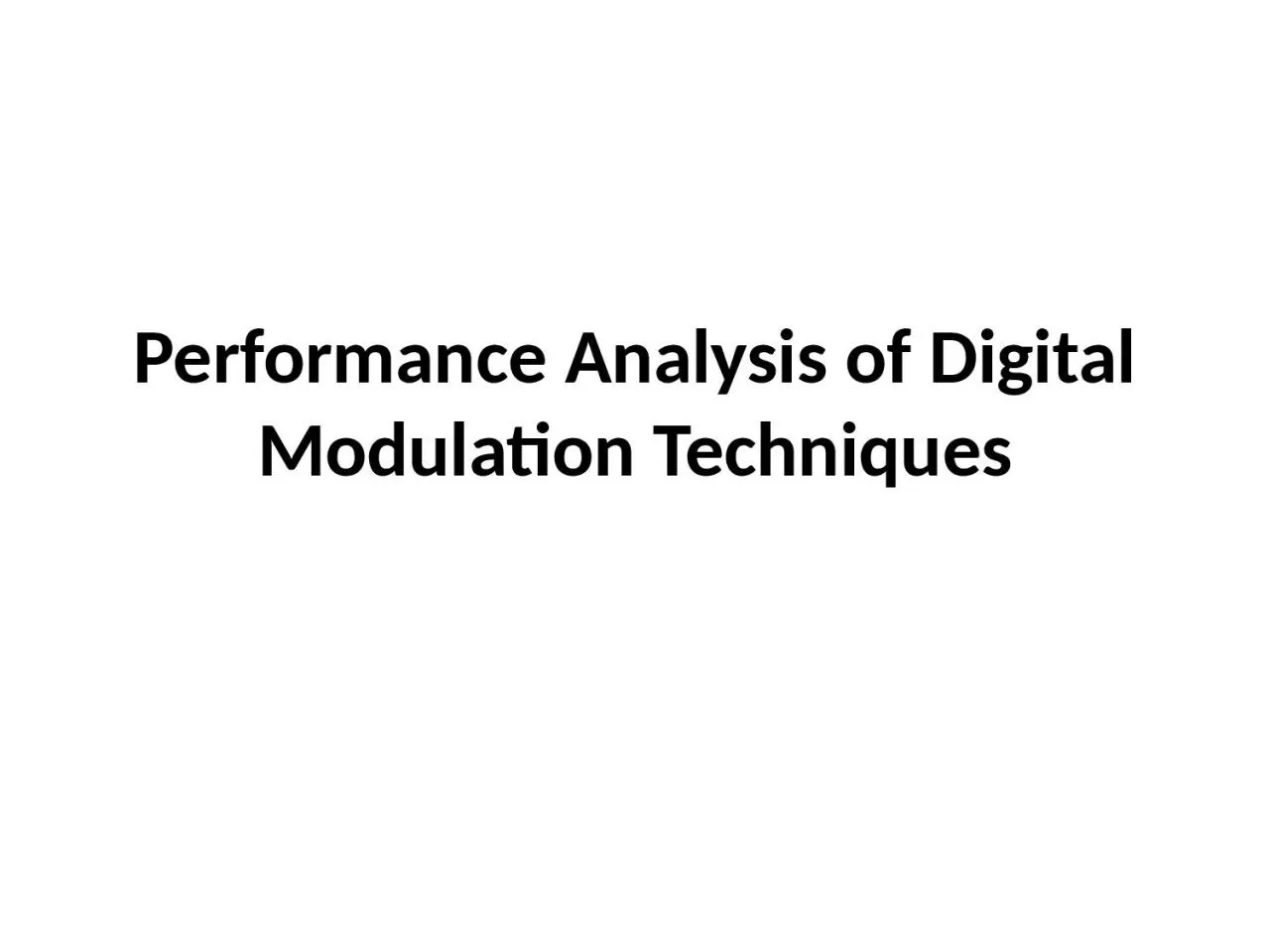

Binary modulation schemes ASK FSK PSK n 1 M 2 Only Two output conditions are possible Baud is equal to the bit rate M ary Modulation Techniques QPSK 8PSK 18PSK QAM 16QAM ID: 1030685
Download Presentation The PPT/PDF document "Performance Analysis of Digital Modulati..." is the property of its rightful owner. Permission is granted to download and print the materials on this web site for personal, non-commercial use only, and to display it on your personal computer provided you do not modify the materials and that you retain all copyright notices contained in the materials. By downloading content from our website, you accept the terms of this agreement.
1. Performance Analysis of Digital Modulation Techniques
2.
3. Binary modulation schemes ASK, FSK, PSKn = 1, M = 2 (Only Two output conditions are possible)Baud is equal to the bit rate
4. M-ary Modulation TechniquesQPSK, 8-PSK, 18-PSK, QAM, 16-QAMn > 1 M > 1 (number of output conditions increases)Minimum bandwidth decreasesBaud rate decreasesAchieves BANDWIDTH COMPRESSION Less bandwidth is required to propagate a given bit rateHigher data transmission rates are possible for a given bandwidth
5. BANDWIDTH EFFICIENCYAlso called as Information density or Spectral efficiencyUsed to compare the performance of one digital modulation technique to another
6. BANDWIDTH EFFICIENCY“Bandwidth efficiency is the ratio of the transmission bit rate to the minimum bandwidth required for a particular modulation scheme”Generally normalized to a 1-Hz bandwidthIndicates the number of bits that can be propagated through a transmission medium for each hertz of bandwidth
7. BANDWIDTH EFFICIENCYBandwidth efficiency can also be given as a percentage by simply multiplying Bη by 100
8. Problems
9. Example - 1For an 8-PSK system, operating with an information bit rate of 24 kbps, Determine (a) baud (b) minimum bandwidth (c) bandwidth efficiency
10. Formula To RememberFor all Modulation types except FSK Minimum Bandwidth is given by Baud rate is given by
11. AnswerMinimum Bandwidth is given by Baud rate is given by
12. Answer
13. Example - 2For 16-PSK and a transmission system with a 10 kHz bandwidth, determine the maximum bit rate.
14. AnswerThe bandwidth efficiency for 16-PSK is 4i.e four bits can be propagated through the system for each hertz of bandwidthMaximum bit rate is simply the product of the bandwidth and the bandwidth efficiency
15. Example -3For the following modulation schemes, construct a table showing the number of bits encoded, number of output conditions, minimum bandwidth, and baud for an information data rate of 12 kbps:QPSK, 8-PSK, 8-QAM, 16-PSK, and 16-QAM
16. To Find
17. Answer
18. Summary